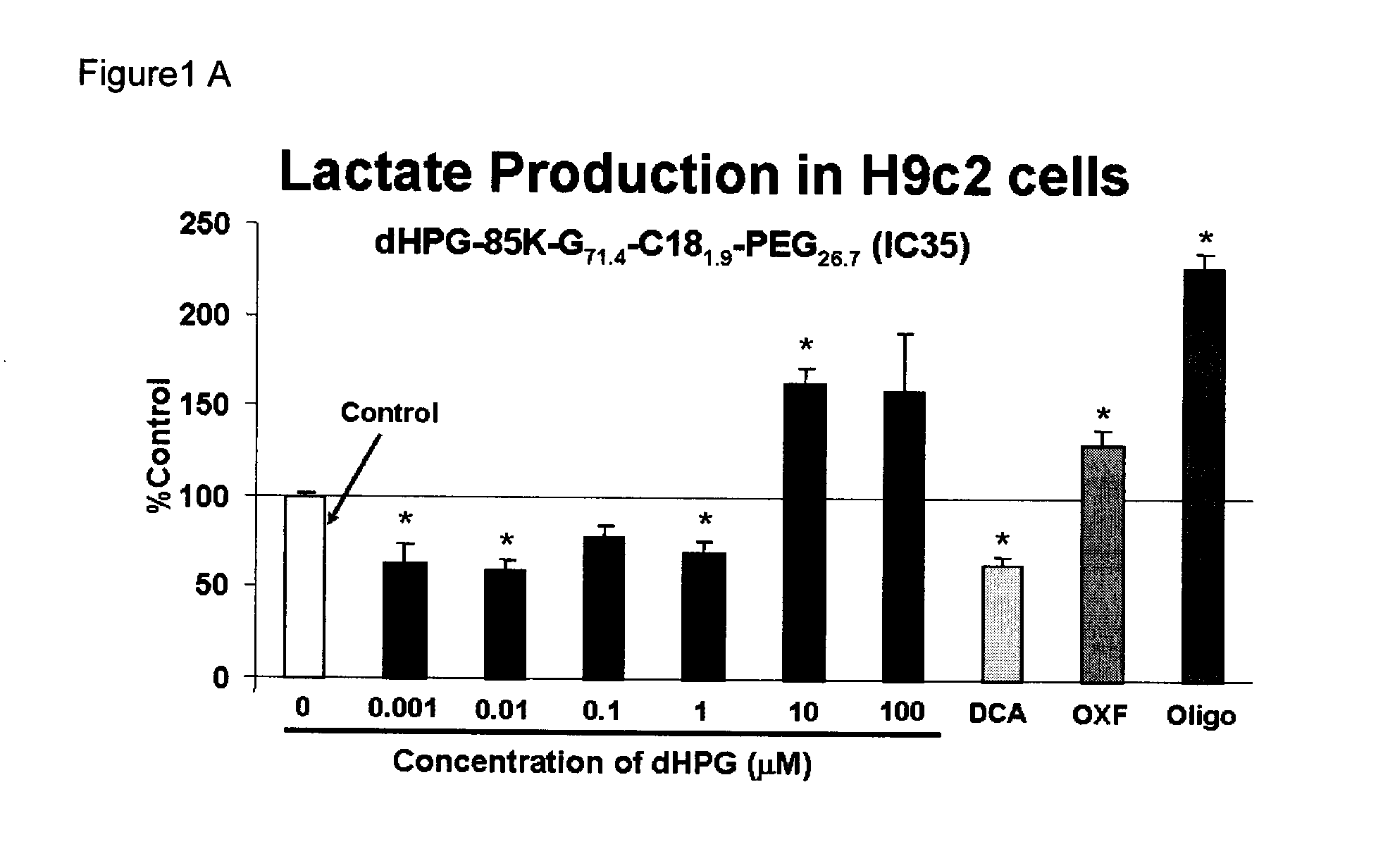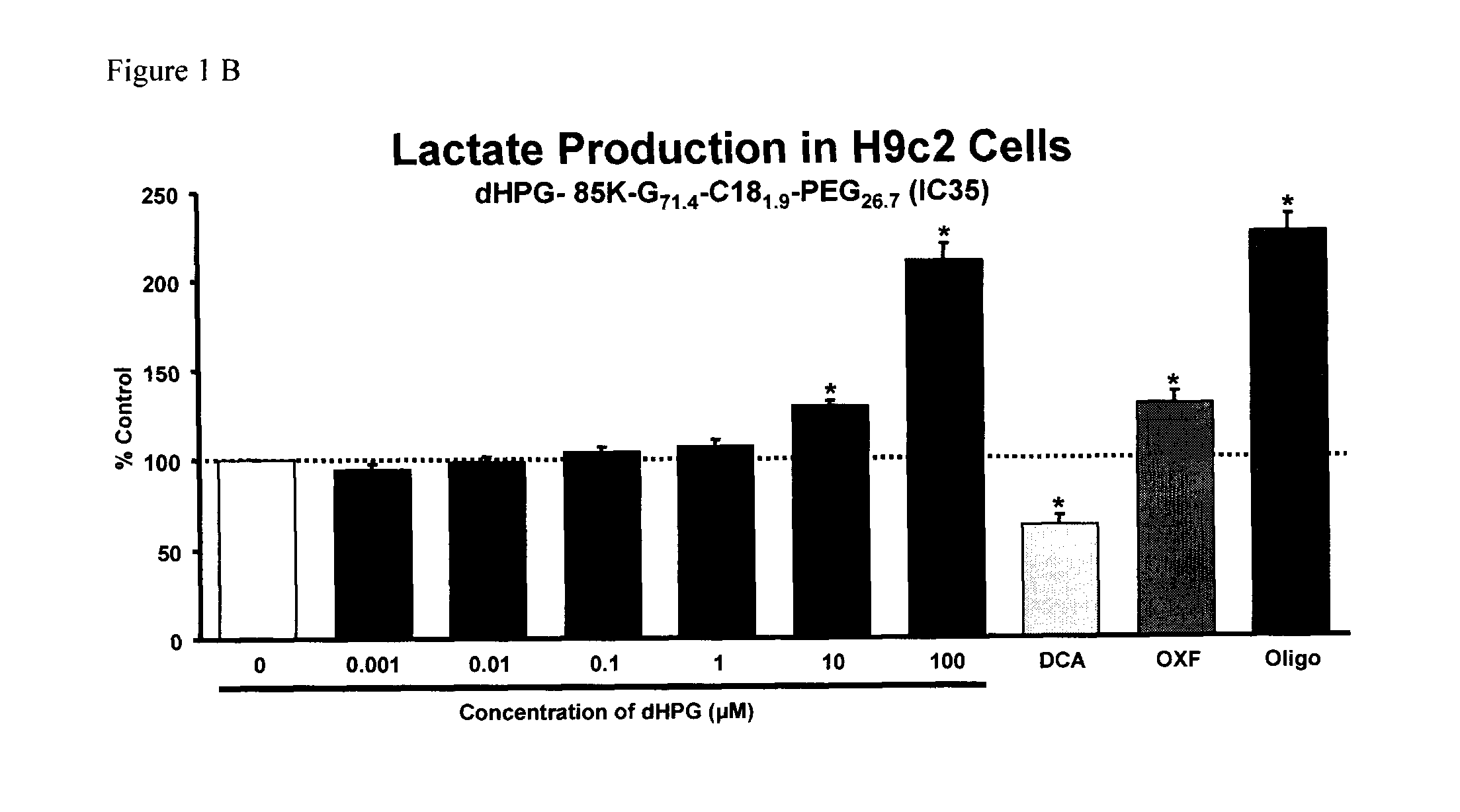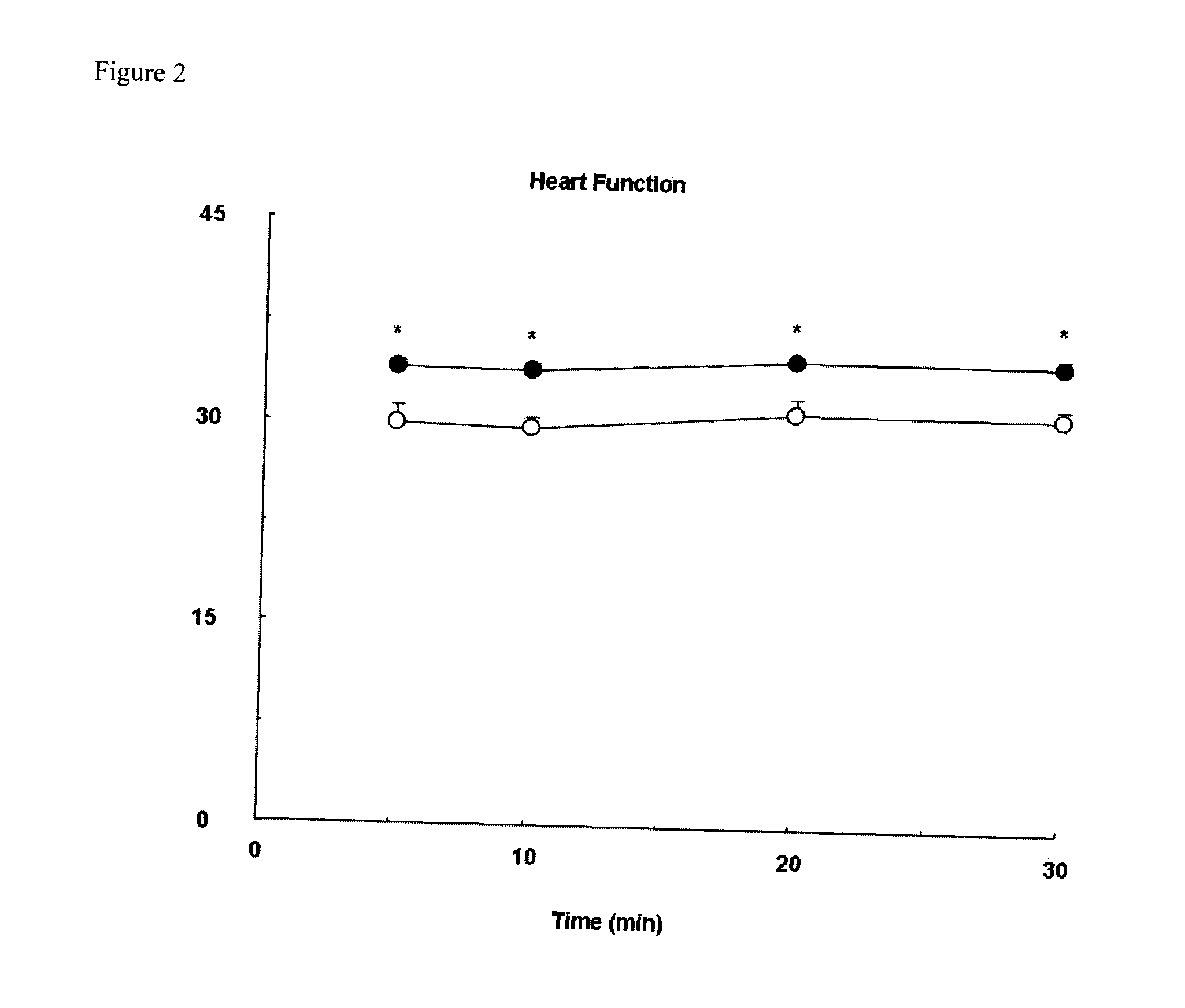Hyperbranched polyglycerol for improving heart function
a polyglycerol and hyperbranched technology, applied in the direction of biocide, drug composition, cardiovascular disorder, etc., can solve problems such as toxic concerns, and achieve the effect of improving heart function and improving heart function
- Summary
- Abstract
- Description
- Claims
- Application Information
AI Technical Summary
Benefits of technology
Problems solved by technology
Method used
Image
Examples
example 1
Alteration in Lactate Concentration by HPG Polymers in Heart Muscle Cells
[0151]A variety of dHPG polymers were administered to H9C2 cells in culture and the lactate production analyzed (Tables 2, 3; FIGS. 1a, b). FIG. 1a shows an initial assay of lactate production; FIG. 1b and Tables 2, 3 show a repeat of the original lactate production in which a more accurate normalization procedure was used, providing greater consistence across repetition. Concentration range data (0.0001 to 250.0 uM), as well as controls (dichloroacetate-7.5 mM, DCA-BDH), a group exposed to oxfenicine (2 mM, OXF-Fluka), and a group exposed to oligomycin (2.0 μM, Oligo-Sigma). Exemplary results for HPG polymer IC35 (dHPG-39K-G78-C181.6-PEG20) are shown in FIG. 1.
[0152]Lactate concentration decreased with lower concentrations of dHPG polymer (0.001 to 1 uM) (FIG. 1b). An alkylated polymer concentration of 10 or 100 uM resulted in an increased concentration of lactate. Samples treated with DCA showed a reduction i...
example 2
Function of Isolated Working Hearts
[0158]Isolated, working rat hearts were exposed to 10 μM dHPG-85K-G71.4-C181.9-PEG26.7(RKK-108) and studied under normoxic, non-ischemic conditions. During normoxic, non-ischemic perfusion, RKK108 improves heart function (rate-pressure assessment—beats per minute×mmHg / 1000) by about 10 to about 15% (FIG. 2), When heart function is assessed by hydraulic work an improvement of about 20% is also observed. A similar experiment, treating hearts with oxfenicine at 2 mM concentration showed a similar trend.
[0159]RKK108 reduces palmitate oxidation and stimulates both glucose oxidation and accumulation of lactate in the perfusate (FIG. 3). Elevation in lactate is a reflection of an increased rate of glycolysis. This increased accumulation of lactate is similar to that seen with the same concentration of RKK108 (1 mg / ml, or 11.8 uM) administered to H9C2 cells. The results obtained with RKK108 (FIG. 3) are similar to those seen in hearts exposed to oxfenicine...
example 3
Metabolism and Function of Ischemic Isolated Working Hearts
[0163]FIG. 19 shows the effect of C18 dHPG (IC35, dHPG-39K-G78-C181.6-PEG20) at 20 to 50 μM on substrate utilization (A) and recovery of function (B) during reperfusion after 24 min of no-flow global ischemia in isolated working rat hearts perfused with 1.2 mM [9,10-3H]-palmitate, 5.5 mM [U-14C]-glucose, 0.5 mM lactate, and 20 mU / l insulin. Concentrations of insulin and substrates reflect values seen in physiological and pathophysiological conditions; the concentration of palmitate recapitulates that seen during myocardial ischemia. Alkylated C18 dHPG (IC-35) at 200 μM had a dramatic effect on recovery of function, resulting in nearly 80% recovery of pre-ischemic function (FIG. 20).
[0164]Alkylated dHPG (IC-35) improves post-ischemic functional recovery as compared to controls (FIG. 19, 20, 23). Non-alkylated dHPG (IC-72, IC-214) may also demonstrate a beneficial effect on functional recovery of the heart following ischemia a...
PUM
| Property | Measurement | Unit |
|---|---|---|
| Molar density | aaaaa | aaaaa |
| Molar density | aaaaa | aaaaa |
| Molar density | aaaaa | aaaaa |
Abstract
Description
Claims
Application Information
 Login to View More
Login to View More - R&D
- Intellectual Property
- Life Sciences
- Materials
- Tech Scout
- Unparalleled Data Quality
- Higher Quality Content
- 60% Fewer Hallucinations
Browse by: Latest US Patents, China's latest patents, Technical Efficacy Thesaurus, Application Domain, Technology Topic, Popular Technical Reports.
© 2025 PatSnap. All rights reserved.Legal|Privacy policy|Modern Slavery Act Transparency Statement|Sitemap|About US| Contact US: help@patsnap.com



